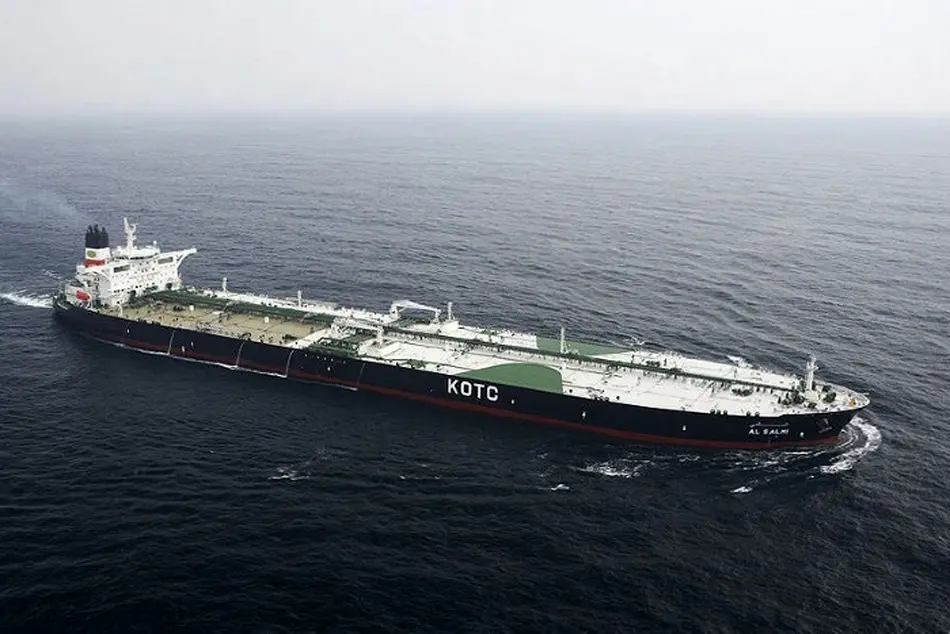VLCC Tonnage Oversupply to Diminish in October says Shipbroker

It seems that VLCC excess tonnage is gradually been absorbed, as the oil market is nearing the winter season in the northern hemisphere. In its latest weekly report, shipbroker Charles R. Weber said that “VLCC demand was mixed this week with the Atlantic basin continuing to observe strong activity while the Middle East was slower on a slower progression into the final decade of the October loading program amid the China National Day Golden Week holiday. There were 24 fresh fixtures in the Middle East market, off 29% w/w, though net of COA‐covered cargoes the tally was off by a smaller 19%”.
“Meanwhile, combined West Africa and South Africa fixture tally was unchanged on the week with eight fixtures. The Atlantic Americas market yielded eight fixtures, or one more than last week. The sustained demand strength in the Atlantic basin augmented mounting positive rate pressure in the Middle East market by drawing away available units and allowing rates to react positively to the narrowing supply/demand situation. Indeed, as the market progresses towards the end of the October program, surplus Middle East supply has continued to decline. We project that October will conclude with 11 surplus units, or the fewest since the April program. This compares with 14 at the conclusion of October’s second decade and 29 units at September’s conclusion. On this basis, we believe that rates have further near‐term upside potential as our model suggests an AG‐FEAST TCE of around $28,750/day while the present TCE yield is ~$24,799/day. Stronger activity expected to materialize during the upcoming week in the Middle East will likely hasten gains”, said the shipbroker.
According to CR Weber, “further forward, we continue to upwardly revise our views for Q4 as prospects continue to appear. Among these, it was confirmed this week that Saudi Arabia would raise their OSPs for Asian buyers a third‐consecutive month during November, which should maintain positive demand momentum in the Atlantic basin by pushing some of Asia’s purchases to the region. Meanwhile, US crude exports continue to develop positively and are expected to combine with a further migrating of Venezuela’s exports towards Asia and away from points in North America”.
CR Weber went on to mention that “additionally, the market observed an extending of demand gains in the North Sea and Mediterranean markets. As these units generally comprise the list of natural positions for voyages from the Atlantic Americas, their onward trades from Europe suggest that Atlantic Americas loadings may need to source more units from the Middle East’s position lists in the coming weeks. These developments would dictate a further narrowing of the Middle East surplus. Meanwhile, any forward short supply of positions in the Americas would require the CBS‐SPORE route to strengthen as the economics of ballasting from Asia to the Americas will be insufficient to draw units against further AG‐FEAST TCE gains”.
Meanwhile, in the Middle East, “rates to the Far East gained 6.5 points to conclude at ws59 with corresponding TCEs rising 30% to ~$24,963/day. Rates to the USG via the Cape added three points to conclude at ws26. Triangulated Westbound trade earnings rose 3% to ~$26,683/day”. In the Atlantic Basin, “rates in the West Africa market were stronger, in‐line with the Middle East. The WAFR‐FEAST rose by 2 points to conclude at ws62 with corresponding TCEs adding 8% to a closing assessment of ~$26,148/day. Rates in the Caribbean market eased modestly as recent inbound tonnage from the Middle East saw the supply/demand positioning rebalance. The CBS‐SPORE rate initially declined from last week’s closing assessment of $4.0m lump sum to $3.8m before paring some of the losses to conclude at $3.85m. Sustained demand strength, however, is likely to lead to a fresh tightening of fundamentals in the coming weeks and fresh gains are expected to materialize on this basis as drawing tonnage from other regions will be more complicated amid rising VLCC rates in the Middle East”, CR Weber said.
Meanwhile, in the Suezmax tanker market, the shipbroker said that “the West Africa Suezmax market was softer this week on a scaling back of regional demand against fresh availability gains. An easing of delays in the Black Sea contributed further to sentiment, as did softening rates in the Caribbean market and slower demand in the Middle East – all reducing the specter of forward tonnage sourcing issues in the West Africa market. There were seven fresh fixtures this week, representing a 36% w/w decline. Rates on the WAFR‐UKC route shed 7.5 points to conclude at ws72.5. The Caribbean market was softer on an easing of Aframax rates which placed the Suezmax class at an even greater $/mt premium and brought Aframaxes into the fray as an alternative – even if only as an argument point for charterers. Demand levels were healthy irrespectively; eleven regional fixtures were reported, including six for USG crude exports and two for fuel oil exports. Rates on the CBS‐USG benchmark shed five points to conclude at 150 x ws72.5”, CR Weber concluded.
